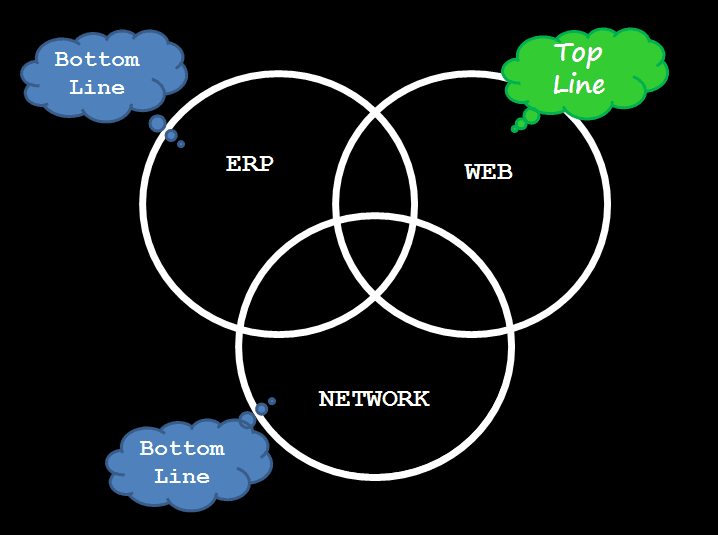There is a flaw in my simplistic story of the Three IT Archetypes – if/when someone points it out, I will openly admit it, but would also insist on a follow-up conversation. Strictly peer-to-peer [regardless of title], one part technique and one part philosophy – and preferably over a suitable beverage.
The problem is the oversimplification – although the diagram hints at it, you typically need to point out that there will always be some overlap. eCommerce is a classic example; a web-based technology that demands a significant Design sensibility to gain attention (with effective presentation of the information) and retain it (with simple, smooth, and flawless transactions). However, you can’t be too single minded here – the volume of transactions, and the ever-present demands of security and scalability, speak to the very different skill set of the ERP crowd.

Similarly, ERP and transactional systems pros inside the Enterprise hear about topics like “usability” from the millennial generation, that wants to do production planning and order scheduling on their intuitive, pastel-colored, flat-icon interfaces that respond to voice commands. Easier said than done – but the pendulum is swinging back to the importance of usability (and it’s also a good way to make sure people actually use the systems …)
There is an interesting dynamic between the three tech groups – especially when their ideas start to mingle and mix. Web and mobile startups that get beyond their first 10,000 users will quickly learn that the technical architecture underneath all of that great HTML5 softness will be the true determinant of success – and the best startups are defining and redefining scalability, supporting transaction volumes that would be the stuff of ERP nightmares.
Similarly, many ERP shops are realizing the value of data visualizations to enable thoughtful analytics and drive real value in their sprawling value chains. With near-real-time data at your fingertips, how much inventory could you take out of your distribution system (and what’s cash flow worth to you?) How fast can you implement “standard work” – if the “work” is intuitive and simple, driving adoption rates with little- to no-training involved? How can you support differentiated customer service for specific, high-value customers – and still be able to pivot on a dime when that new growth opportunity comes through?
Clearly, the ERP, Web, and Network folks in your organization have plenty to learn from and share with each other – as long as they can loosen up from the black-and white paradigms that such a simplistic model suggests. The good folks are out there – they get it.
You just need to find them, enable them, and point ’em in the right direction.






This Post Has 0 Comments